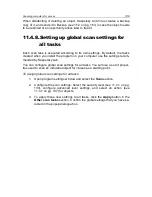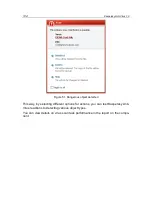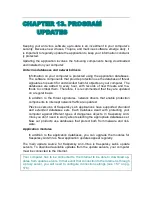
Scanning computers for viruses
131
2. Click on
Customize
under
Security Level
(see Figure 45).
3. Edit file protection parameters in the resulting window and click
OK
.
11.4.2.
Specifying the types of objects to
scan
By specifying the types of objects to scan, you establish which file formats, files
sizes, and drives will be scanned for viruses when this task runs.
The file types scanned are defined in the
File types
section (see Figure 46).
Select one of the three options:
Scan all files
. With this option, all objects will be scanned without exception.
Scan programs and documents (by content)
.
If you select this group of
programs, only potentially infected files will be scanned
– files into which a
virus could imbed itself.
Note:
There are files in which viruses cannot insert themselves, since the con-
tents of such files does not contain anything for the virus to hook onto. An
example would be .txt files.
And vice versa, there are file formats that contain or can contain executa-
ble code. Examples would be the formats .exe, .dll, or .doc. The risk of
insertion and activation of malicious code in such files is fairly high.
Before searching for viruses in an object, its internal header is analyzed
for the file format (txt, doc, exe, etc.).
Scan programs and documents (by extension)
. In this case, the program
will only scan potentially infected files, and in doing so, the file format will be
determined by the filename‟s extension. Using the link, you can review a list
of file extensions that are scanned with this option (see A.1 on pg. 213).
Tip:
Do not forget that someone could send a virus to your computer with the exten-
sion .txt that is actually an executable file renamed as a .txt file. If you select the
Scan Programs and documents (by extension)
option, the scan would skip
such a file. If the
Scan Programs and documents (by contents)
is selected,
the program will analyze file headers, discover that the file is an .exe file, and
thoroughly scan it for viruses.
















































